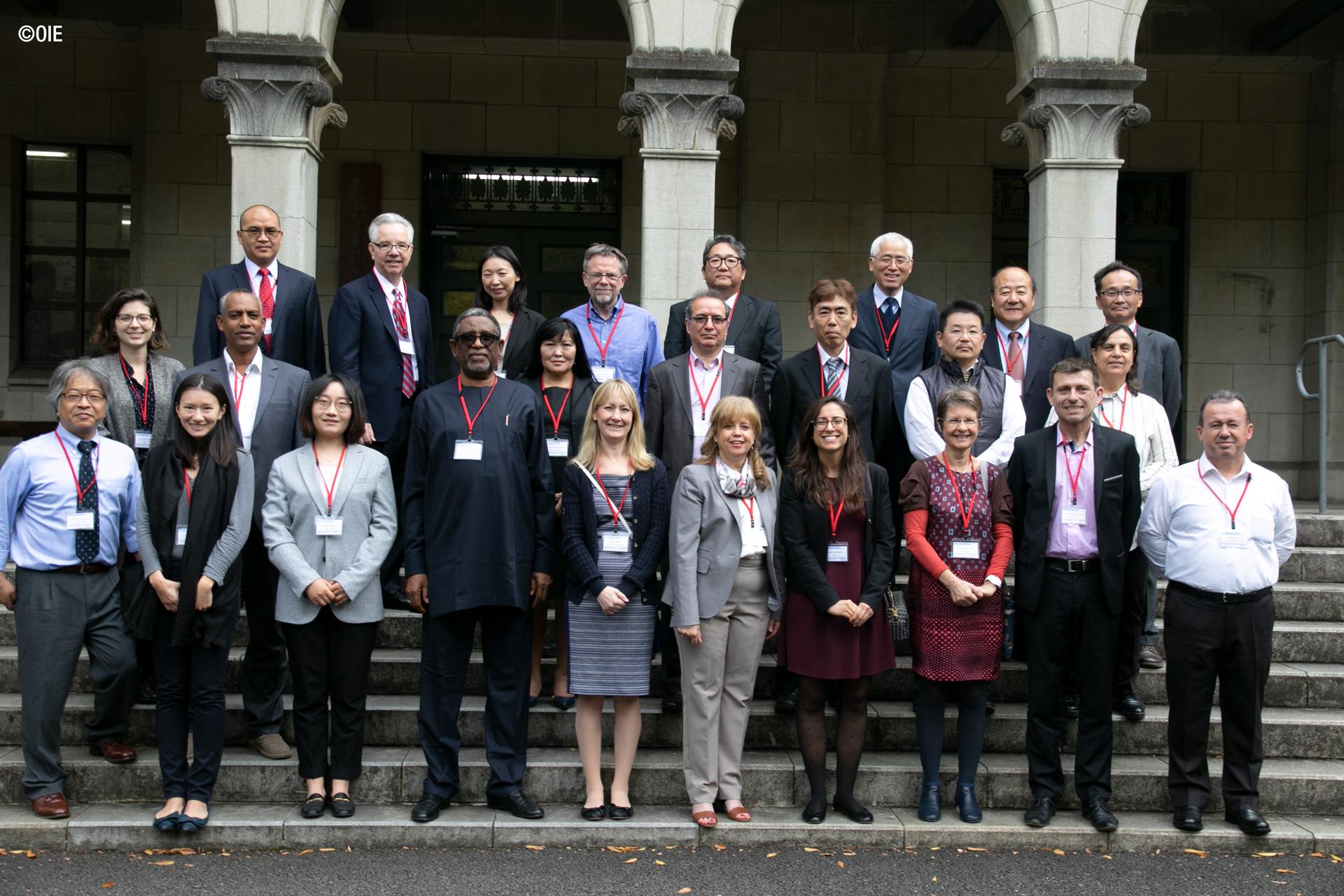In June 2019 The Pirbright Institute destroyed the last samples of rinderpest virus held in the World Reference Laboratory for rinderpest. This completed a major milestone in the World Organisation for Animal Health (OIE) and Food and Agriculture Organization of the United Nations (FAO) programme to eradicate the virus.
On 14 and 15 November 2019, the second meeting of the FAO-OIE Rinderpest Holding Facilities (RHF) took place at the University of Tokyo, hosted by the National Institute of Animal Health (NIAH), NARO, Japan where particpants convened to discuss progress made to date and the next steps in maintaining a rinderpest-free world.
A work plan has been devised in order to reduce the global stocks of rinderpest and encourage countries that hold rinderpest virus without RHF status to give up their samples or become a RHF. The work plan will run on two-year cycles, with the next meeting taking place in 2021. Six-monthly telecommunications conferences will take place in the interim.
Rinderpest virus caused the most lethal cattle disease ever known but in 2011, after a huge global campaign, it officially became the second viral disease to be eradicated, after smallpox. It is estimated that eradication has alleviated losses of USD $920 million every year in Africa alone. However, following eradication, more than 40 laboratories across 36 countries still held samples of material containing rinderpest virus, making the world vulnerable to a reoccurrence of the disease.
The RHF network was set up in 2017 to assist in the implementation of activities that would maintain global freedom from rinderpest in the post-eradication era. Dr Carrie Batten, Head of the Non-Vesicular Disease Reference Laboratory (NVDRL) at Pirbright was named Secretariat for the RHF network.
The network provides opportunities for the six RHFs’ to come together and provide updates on the status of their rinderpest stocks and projects. The RHFs are Pirbright; NIAH, Japan; The French Agricultural Research Centre for International Development (CIRAD); African Union Pan African Veterinary Vaccine Centre (AU-PANVAC), Debre-Zeit, Ethiopia; USDA-APHIS, Foreign Animal Disease Diagnostic Laboratory (FADDL), Plum Island, New York, USA; China Institute of Veterinary Drug Control/China Veterinary Culture Collection Center (IVDC), Beijing, China.
At the meeting in Tokyo Dr Michael Baron, Honorary Fellow at Pirbright and rinderpest expert for the OIE, presented data from Pirbright’s ‘sequence and destroy’ project. Pirbright scientists sequenced nearly 200 of their archived samples in order to gather as much data as possible. More than 3000 vials of rinderpest virus-containing materials were destroyed. Pirbright has led the implementation of this project as the OIE Reference Laboratory and FAO World Reference Laboratory (WRL) for rinderpest.
These laboratories are housed in The BBSRC National Virology Centre: The Plowright Building, which comprises the UK’s flagship high containment facility for livestock diseases, and houses the latest genetic sequencing capability. The building is named after Walter Plowright, who developed the rinderpest vaccine that was used to eradicate the disease.
As the first RHF to destroy its remaining samples of rinderpest virus, Pirbright has agreed to share its inventories. These include the identification of the strains that were sequenced so that other labs can destroy duplicate strains secure in the knowledge the data on them has already been obtained. Having completed their own sequencing project, CIRAD will destroy their remaining samples this year.
Photo courtesy of the World Organisation for Animal Health (OIE): Participants at the FAO-OIE Rinderpest Holding Facilities (RHF) in Tokyo, Japan 14-15 November 2019
